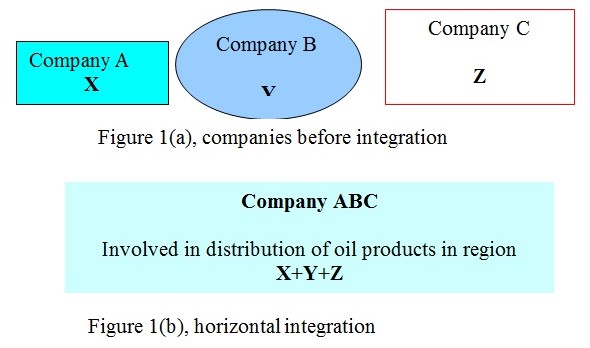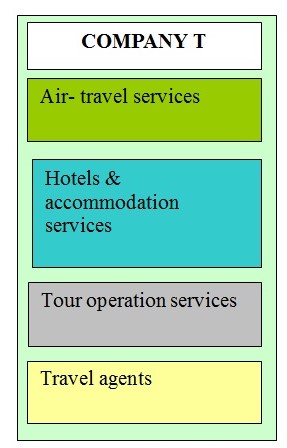Introduction
The travel and tourism industries form one of the most important sectors in the economy of any country. In 1999 the tourism and travel industry formed 5% of UK GDP. The travel and tourism sector serves the demand for travel of residents in and out of the country as well as travel for visitors from overseas. The travel and tourism industry has made tremendous steps of growth over time while responding to the constant challenges facing the dynamic industry. The challenges facing the travel and tourism industry are drawn from within the country as well as from global impacts and demands.
Travel and tourism, in addition to the high contribution to the economy, integrate a lot of other industries proving employment opportunities to a vast population in the country. The travel industry involves road, air, rail, and water transport sectors. The development of the travel industry in the UK has directly led to positive impacts on the tourism sector, especially when responding to dynamic challenges.
Development of package holidays
Initially, the tourism industry involved tour operators who arranged holiday packages for customers. This involved provision of accommodation means of travel, and choice of activities that were pre-arranged, etc. These arrangements were done to suit the operations of the tour operators. The recent development in this area has been the shift to a situation where the consumers make choices that suit them. This has been made possible through the use of online booking systems where the consumer chooses from thousands of options provided, thanks to the development of information and communication technology. This involves research on the area of preference, booking a flight, accommodation, plan routes, hire cars, and book a train or ferry, etc all possible by clicking a mouse. Availability of this service has prompted the consumers to buy directly from the suppliers while the suppliers sell directly to the consumers e.g. Budget Airlines offers real-time online bookings at varying prices.
Development of travel agents
The shift of the operations in the travel and tour operations from supplier-driven to consumer-driven operations has lead to direct interactions of the consumer and the supplier of travel services. The above-indicated concept has posed a great challenge to the businesses of travel agents where the number of clients in travel agencies is constantly reducing. This shift has posed a great challenge to the tour operators and several companies have merged to create a market dominated by two major service providers. In October 2008, Worldchoice and Travel Trade Association (TTA) merged to beef up operations against the Triton Travel Group. While the tour operators have rendered the consumers independent to make their preferred choices online, they also involve themselves in drafting dynamic packages with dynamic prices depending on demand. (Biz/ed para 8). According to Lambert (para 5), other mergers in tour operators happened in 2007 where German travel firm TUI merged with UK-based First Choice to create TUI Travel Plc. This followed another merger between Thomas Cook and My Travel tour operator companies.
Vertical integration vs. horizontal integration
According to Liden (2009: Para 1), horizontal integration entails companies at the same line of production of goods and services merging for business reasons. This can be illustrated best by the merger of two companies in the UK offering tour and travel services in October 2008. Worldschoice merged with Travel Trade Association (TTA), to increase the market share in the provision of tour services in the UK. Horizontal integrations are done for several reasons: – When companies’ producing/providing similar goods/services merge, they can increase their share of the market considerably. This is because the companies can sell more of their products; the companies can share resources and merge synergies for effectiveness; merger promotes effectiveness by increasing market power over other suppliers.
On the other hand, vertical integration is where companies at different stages of production or distribution merge. Vertical integration can be either forward or backward. Backward integration involves a merger with the company at a lower level of production e.g. input suppliers, while a forward merger involves a merger with a company at a higher level of production e.g. output distributor. When a tour operator company merges with a travel agent company, such integration is vertical. The advantages of vertical integration include Monopoly of the market throughout the chain; reduction of operations costs; and effective control of supply, production, and distribution.
Diagrams showing horizontal and vertical integration
The vertical and horizontal integrations can be illustrated using the following diagrams.
Horizontal integration
Company A is involved in the distribution of oil products in region X while company B distributes oil products in region Y and Z while company C distributes oil products in both region Y and Z. if the three companies merge to form company ABC, the type of integration formed is horizontal.

Vertical integration
Consider company P,Q and R where, company P is a travel agency, company Q is a tour operator company, company R has a chain of five-star hotels while company S a freight company offering air travel services to tourists in a certain country. If a merger of P, Q, R and S is made to company T, the type of integration will be vertical.


Technological development
The travel and tourism industry in UK has witnessed tremendous technological advancement over time. The most resent developments involved upgrade of the road networks, rail network, and most resent sea travel vessels, up to date technology airline services and a vast and dynamic information and communication technologies. This has been possible trough employing technologically advanced concepts to solve some of the challenges facing the travel and tourism industry. The most resent developments in this industry that have been witnessed in UK include:
- Construction of Channel Tunnel Rail Link (CTRL)
- Construction of new super ferries.
- Provision of online services in travel and tourism sector.
Development in the airline industry
The resent developments in the airline industry regarding the travel and tourism have been the link between the air travel service providers and the consumers through the use of internet. In UK airline companies are adopting this new technology where online bookings are possible. In provision for this service, dynamic packages have been introduced with dynamic pricing. This means that the consumer is at liberty to make bookings that favors them either economically or casually e.g. Budget airlines offers real-time online booking services. Online services in the airline sector have led to saving of money through elimination of expenses initially incurred through involving travel agents. The growth of the airline industry in the UK has witnessed tremendous growth evidenced by the increase in infrastructural development of the sector as well as increased interconnectivities with the rest of the world.
Development in rail and sea transport
UK has adopted one of the resent technologies in rail and sea transport. The most tremendous development is the construction of the Channel Tunnel Rail Link (CTRL). Construction of the modern high speed rail transport system was aimed at provision of better transport services to the public and reduction of traffic congestion in the towns. The rail transport in UK provides one of the safe and fastest means of transport. The electric train traveling at 186 mph (300 kph) is aimed to eventually connecting London with Paris with its larger portion passing underground. (CTRL, United Kingdom para. 1). Its high efficiency is leading to rail transport being preferred over road transport.
On the other hand sea transport has also been targeted in development of the travel and tourism industry. UK has adopted some of the modern advanced sea transport networks through use of super ferries to make sea transport easy and efficient. The water channel networks connect most major towns in UK and also other countries. This contributes positively to the growth and development of the travel and tourism industry.
Conclusion
The success of the travel and tourism sector in UK depends on the speed with which players in the industry will apply in relation to adopting new technologies and ideas. The use of internet has led to drastic changes in this sector with expected more changes in quest to ensure prosperity of the industry. In addition, tourism industries involve connecting to other areas in the world where relevant technologies are required to keep the worlds pace of development in this industry.
Works Cited
Biz/ed. “Package holidays, dynamic pricing and the credit crunch”. Package holidays, dynamic pricing and the credit crunch. 2009. Web.
”Channel Tunnel Rail Link (CTRL), United Kingdom”. Channel Tunnel Rail Link (CTRL), United Kingdom. 2007. Web.
Lambert, Simon. “TUI and First Choice to merge”. TUI and First Choice to merge. 2009. Web.
Liden, Daniel. ”What Is Horizontal Integration?” What Is Horizontal Integration? Web.